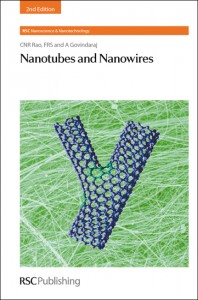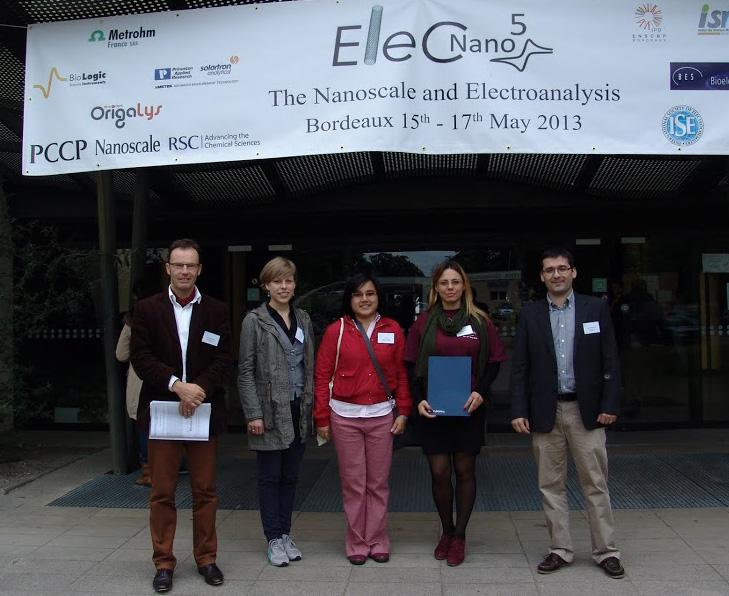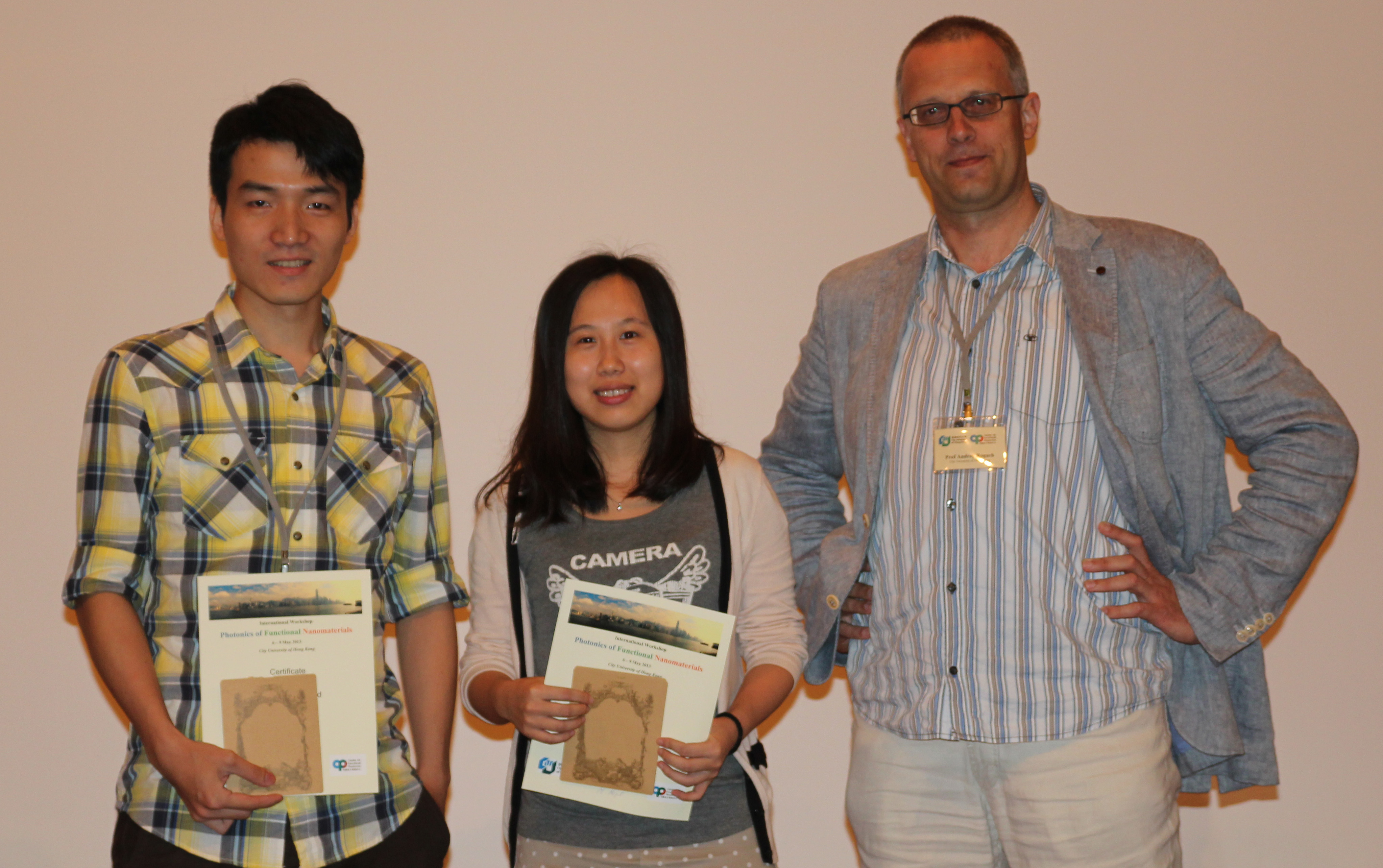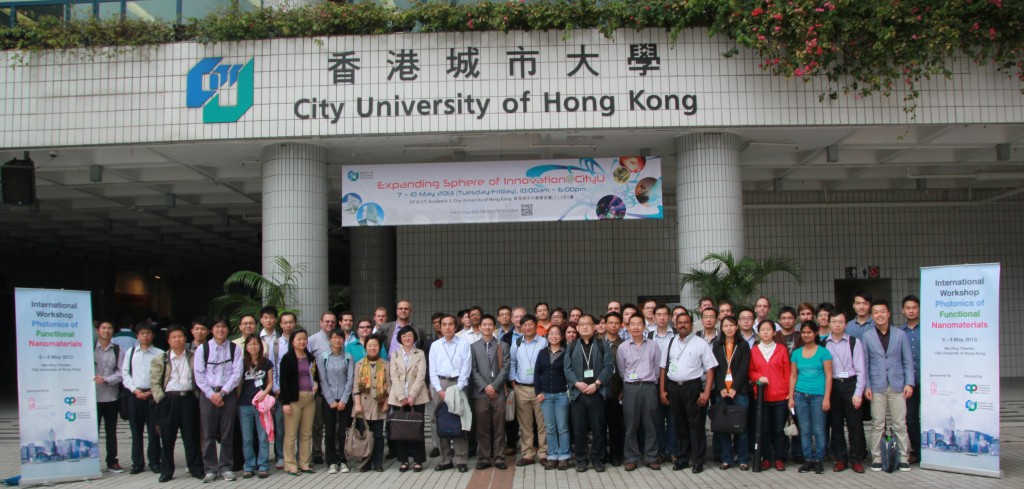Mesoporous silica nanoparticles as antigen carriers and adjuvants for vaccine delivery
Karishma T. Mody, Amirali Popat, Donna Mahony, Antonino S. Cavallaro, Chengzhong Yu and Neena Mitter
DOI: 10.1039/C3NR00357D, Review Article
Impurity doping: a novel strategy for controllable synthesis of functional lanthanide nanomaterials
Daqin Chen and Yuansheng Wang
DOI: 10.1039/C3NR00368J, Feature Article
Long-life and high-rate Li3V2(PO4)3/C nanosphere cathode materials with three-dimensional continuous electron pathways
Liqiang Mai, Shuo Li, Yifan Dong, Yunlong Zhao, Yanzhu Luo and Hongmei Xu
DOI: 10.1039/C3NR01490H, Paper
Identification of vibrational signatures from short chains of interlinked molecule–nanoparticle junctions obtained by inelastic electron tunnelling spectroscopy
S. H. M. Jafri, H. Löfås, J. Fransson, T. Blom, A. Grigoriev, A. Wallner, R. Ahuja, H. Ottosson and K. Leifer
DOI: 10.1039/C3NR00505D, Communication
Phase transformation and thermoelectric properties of bismuth-telluride nanowires
Cheng-Lun Hsin, Matthew Wingert, Chun-Wei Huang, Hua Guo, Ten-Jen Shih, Joonki Suh, Kevin Wang, Junqiao Wu, Wen-Wei Wu and Renkun Chen
DOI: 10.1039/C3NR00876B, Communication
Simultaneous electrical and plasmonic monitoring of potential induced ion adsorption on metal nanowire arrays
Robert MacKenzie, Corrado Fraschina, Bernd Dielacher, Takumi Sannomiya, Andreas B. Dahlin and Janos Vörös
DOI: 10.1039/C3NR34172K, Paper
The unusual effect of AgNO3 on the growth of Au nanostructures and their catalytic performance
Xingliang Li, Yun Yang, Guangju Zhou, Shuhua Han, Wenfang Wang, Lijie Zhang, Wei Chen, Chao Zou and Shaoming Huang
DOI: 10.1039/C3NR00603D, Paper
High-energy supercapacitors based on hierarchical porous carbon with an ultrahigh ion-accessible surface area in ionic liquid electrolytes
Hui Zhong, Fei Xu, Zenghui Li, Ruowen Fu and Dingcai Wu
DOI: 10.1039/C3NR00738C, Communication
Seawater-driven magnesium based Janus micromotors for environmental remediation
Wei Gao, Xiaomiao Feng, Allen Pei, Yonge Gu, Jinxing Li and Joseph Wang
DOI: 10.1039/C3NR01458D, Communication
An associative capacitive network based on nanoscale complementary resistive switches for memory-intensive computing
Omid Kavehei, Eike Linn, Lutz Nielen, Stefan Tappertzhofen, Efstratios Skafidas, Ilia Valov and Rainer Waser
DOI: 10.1039/C3NR00535F, Paper
Controlled 3D-coating of the pores of highly ordered mesoporous antiferromagnetic Co3O4 replicas with ferrimagnetic FexCo3−xO4 nanolayers
Eva Pellicer, Moisés Cabo, Alberto López-Ortega, Marta Estrader, Lluís Yedra, Sònia Estradé, Francesca Peiró, Zineb Saghi, Paul Midgley, Emma Rossinyol, Igor V. Golosovsky, Alvaro Mayoral, Joan D. Prades, Santiago Suriñach, Maria Dolors Baró, Jordi Sort and Josep Nogués
DOI: 10.1039/C3NR00989K, Paper
Comments Off on Recently published HOT articles in Nanoscale


















 This method is based upon the anti-aggregation of silver nanoparticles (AgNPs), resulting in a reduced SERS signal in the presence of trypsin. The authors functionalized AgNPs with protamine, a low molecular weight protein, which adsorbs to the negatively charged AgNP surface via electrostatic interaction of the polycationic arginine residues abundant in the protein. Adsorption of protamine resulted in AgNP aggregation due to the neutralization of the negative charge on the NP surface. This resulted in an increase in the SERS signal of a Raman reporter molecule, 4-mercaptopyridine (4-MPY), adsorbed on the NP surface.
This method is based upon the anti-aggregation of silver nanoparticles (AgNPs), resulting in a reduced SERS signal in the presence of trypsin. The authors functionalized AgNPs with protamine, a low molecular weight protein, which adsorbs to the negatively charged AgNP surface via electrostatic interaction of the polycationic arginine residues abundant in the protein. Adsorption of protamine resulted in AgNP aggregation due to the neutralization of the negative charge on the NP surface. This resulted in an increase in the SERS signal of a Raman reporter molecule, 4-mercaptopyridine (4-MPY), adsorbed on the NP surface.



 We are very pleased to announce that Nanoscale has been accepted for coverage in the prestigious
We are very pleased to announce that Nanoscale has been accepted for coverage in the prestigious